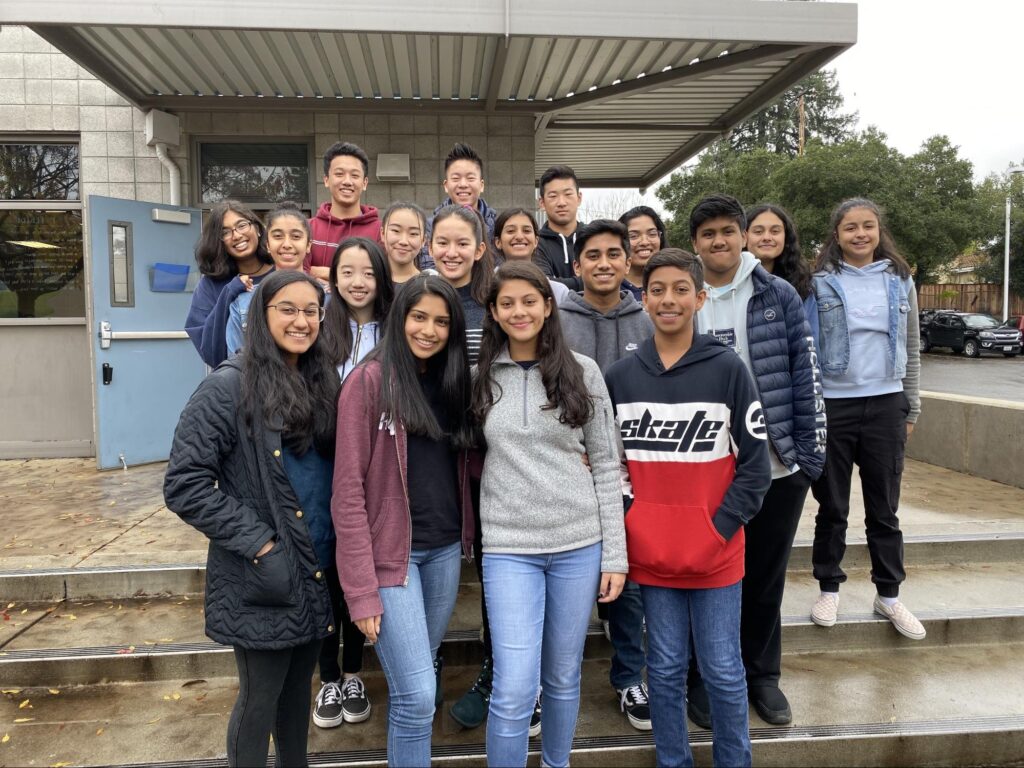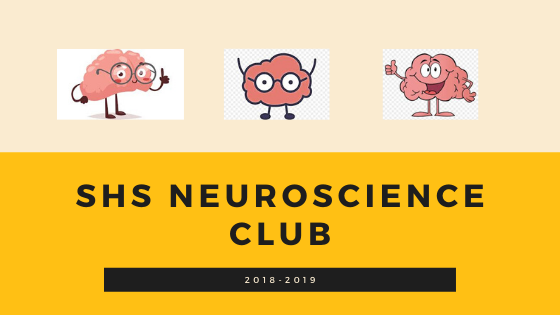
After a wonderfully enriching and informative summer 2018, I returned to Saratoga High School (SHS) as a sophomore, equipped with my newfound passion for and knowledge of neuroscience. I was so thrilled and excited to be able to share my interests in the wonderful field of neuroscience with my friends and fellow classmates. But, to my dismay, no opportunities or outlets to pursue and spread my interest in neuroscience were present at my high school. Thus, I set myself to the task of starting Neuroscience Club, a space where my team of club officers and I could spread our mutual interest in neuroscience to the rest of the student body, through TED talks, guest speakers, and educational presentations.
I had big hopes for Neuroscience Club, but first, I had to figure out some key details: how do I even go about starting a club at SHS? Do I have to find the club officers myself? Do I have to present my idea to someone? After inquiring with the Club Commissioners, I learned that starting a club is an extremely multi-faceted process: first, I had to assemble a team of officers; second, I had to fill out an application; third, I had to schedule an interview with ASB, the Associated Student Body, a group of student representatives; fourth, I had to wait and hope that my club would be added to the 60-something already established clubs at SHS.
My first step was to find reliable, determined, and hardworking officers who had a strong passion for neuroscience, like I did. Although this process may seem hard, I actually knew people around the school that had a passion for neuroscience and offered two of my friends/acquaintances the positions of Vice President and Treasure for the club. However, I wanted to ensure that there was diversity in the club and that not all the officers were my immediate friends. Thus, I asked around in other grades and found a secretary for my club, who was in the grade above mine. Now, I had a fully assembled officer team.
The next step was for the four of us to meet and fill out our club application. The ASB Club Commissioners had designed an application so that they would have a brief sense of what the club entails prior to our interview with them. Questions on the application included the club’s mission statement, how often we planned to hold lunch meetings, what we would do during lunch meetings, and when we would meet outside of school. This process really allowed my officers and I to materialize our club and come up with a game plan for the club if we were accepted.
After reading over our New Club Application, ASB decided to schedule an interview with my club officers and me, for which we had to create a slides presentation talking about our club as well as what a typical lunch meeting would look like. Overall, I thought that the interview went smoothly and that we were able to properly articulate our vision for the club.
Unfortunately, the ASB did not agree with my assessment of the interview, and Neuroscience Club was rejected, for the time being. The ASB team thought that our plan for the club was too vague and not rooted in enough specifics. They believed that our idea was great and that our passion for neuroscience was genuine, but they were not convinced that our club would be able to survive for many school years to come.
Although I was saddened that my club had not been accepted on the first try, I was not willing to give up. Neuroscience was a field I was deeply passionate about, and I would not let this small setback prevent me from spreading my interest in neuroscience with others. So, my club officers and I came together once again. We had to submit a Club Reapplication form, which was pretty much identical to our initial club application, except this time we had to specify what we would do differently on the basis of the criticism we had received from the ASB. We interviewed with ASB again, and this time, we achieved success! Neuroscience Club was officially accepted and could now be listed on the roster of active clubs present at SHS.
Even though Neuroscience Club was an official club at Saratoga High School, we were not completely out of the woods yet. We still had the hardest task of all awaiting us: getting members to join our club. Since Neuroscience Club was rejected the first time we applied, we were forced to start the club during the club year. As a result, we missed the chance to present our club at the annual Club Fair hosted at SHS, an event where students can sign up for clubs of their choosing, where most clubs gain the majority of their new members. Thus, my team of club officers and I had to be creative in terms of how we attracted members to our club. First, we created a Facebook group for Neuroscience Club so that our members could join and stay up to date on information about meetings as well as other announcements. I made catchy flyers and banners (like the one displayed at the top of this article) that we displayed at school as well as on our social media platforms, such as Facebook and Instagram. I used our school wide Facebook group to promote our Neuroscience Club Facebook group. Once our Facebook group started accumulating members, my officers and I decided to start holding meetings. To ensure that we had enough members at meetings, my club officers and I spread the word amongst our friend and acquaintance networks. I also promoted each of our meetings on the school wide Facebook group. Although our club meetings were initially quite small with only about 10 people coming to each meeting, we now average about 30 people per meeting and our Neuroscience Club Facebook group is 106 members strong.
